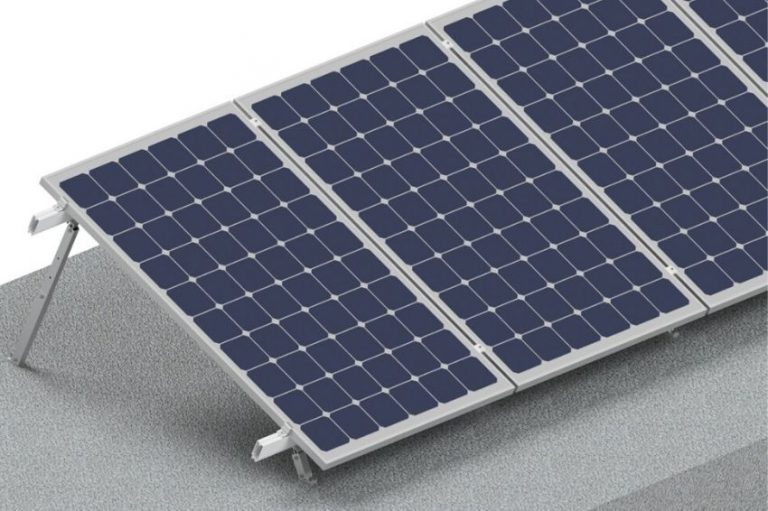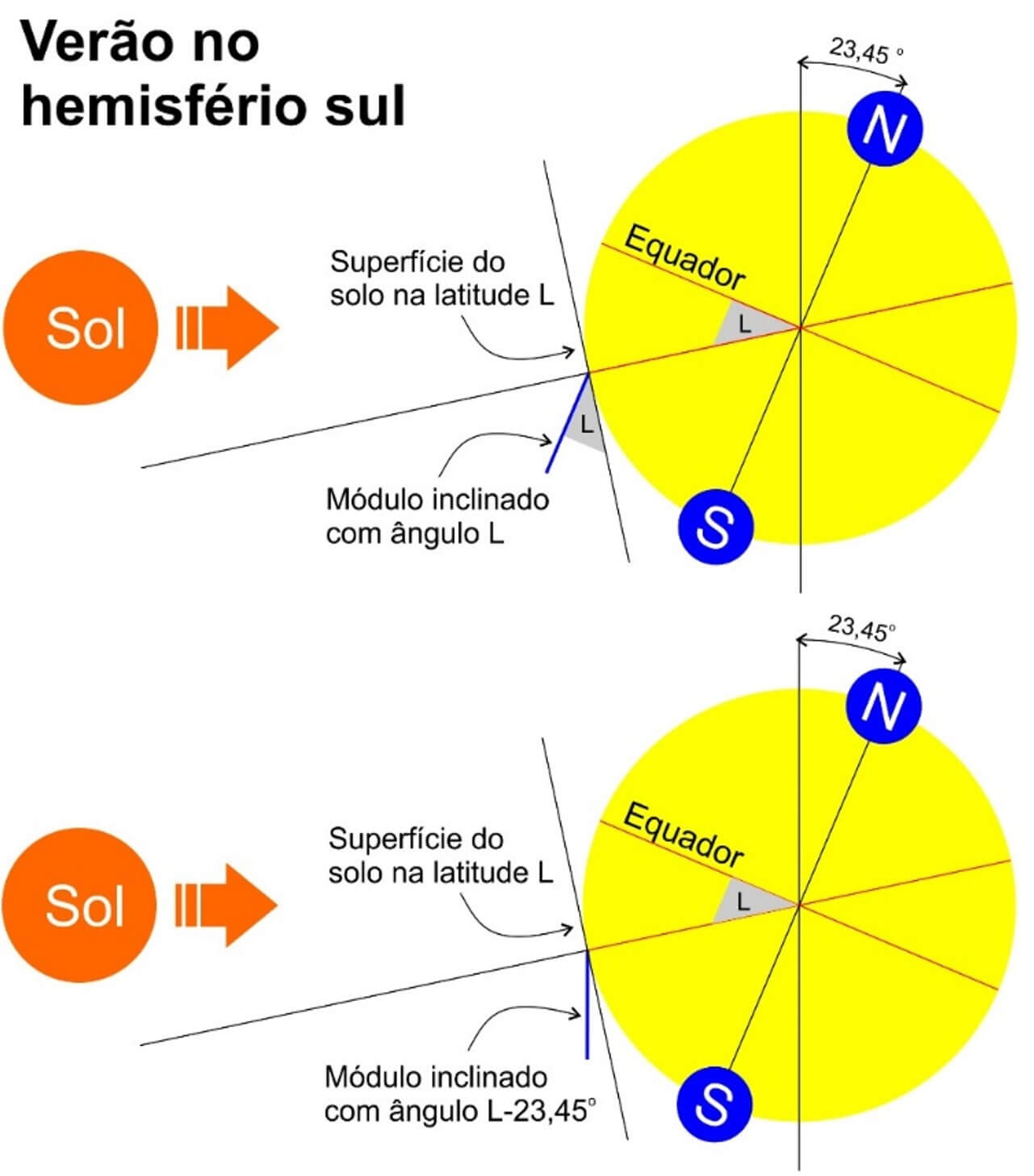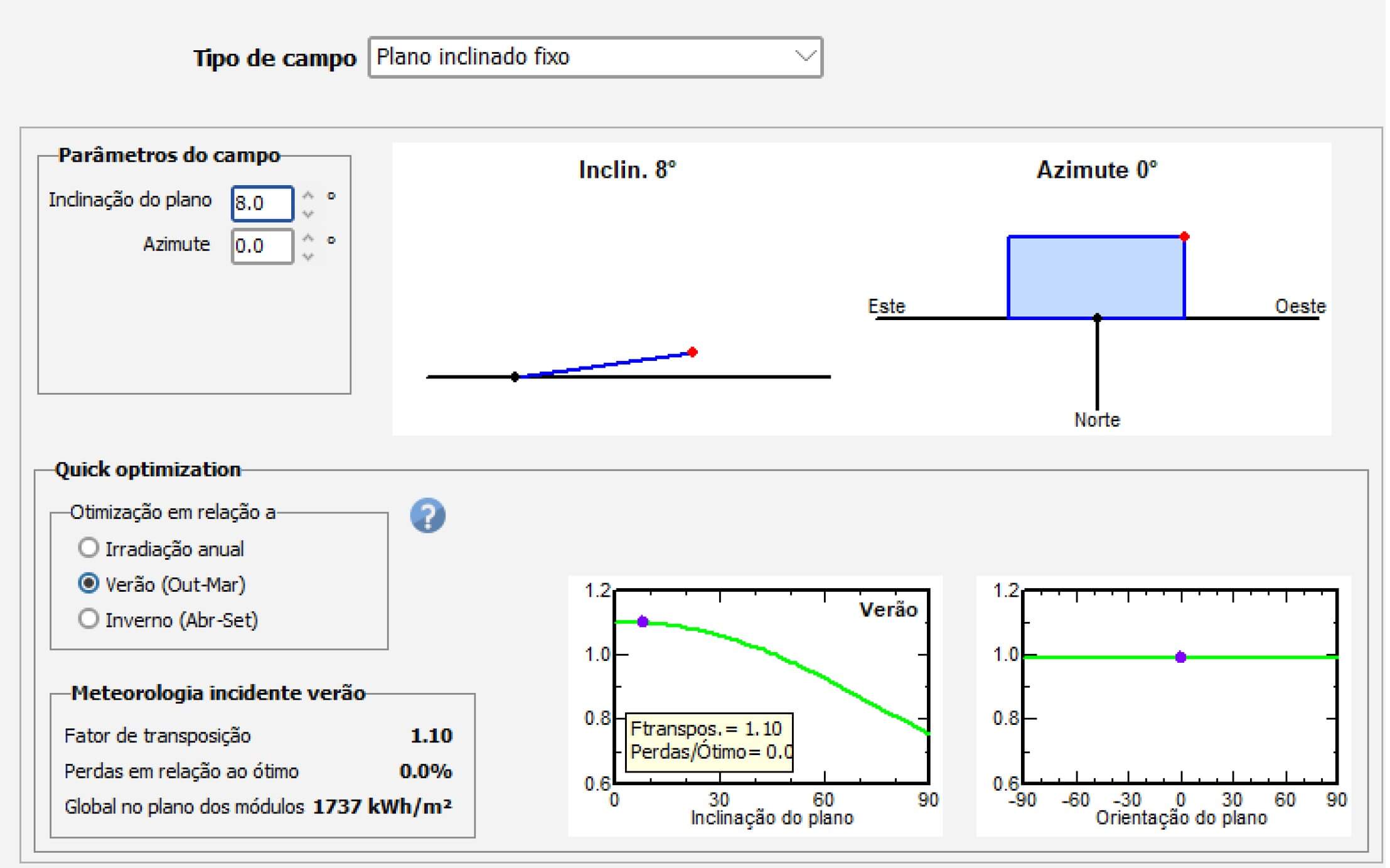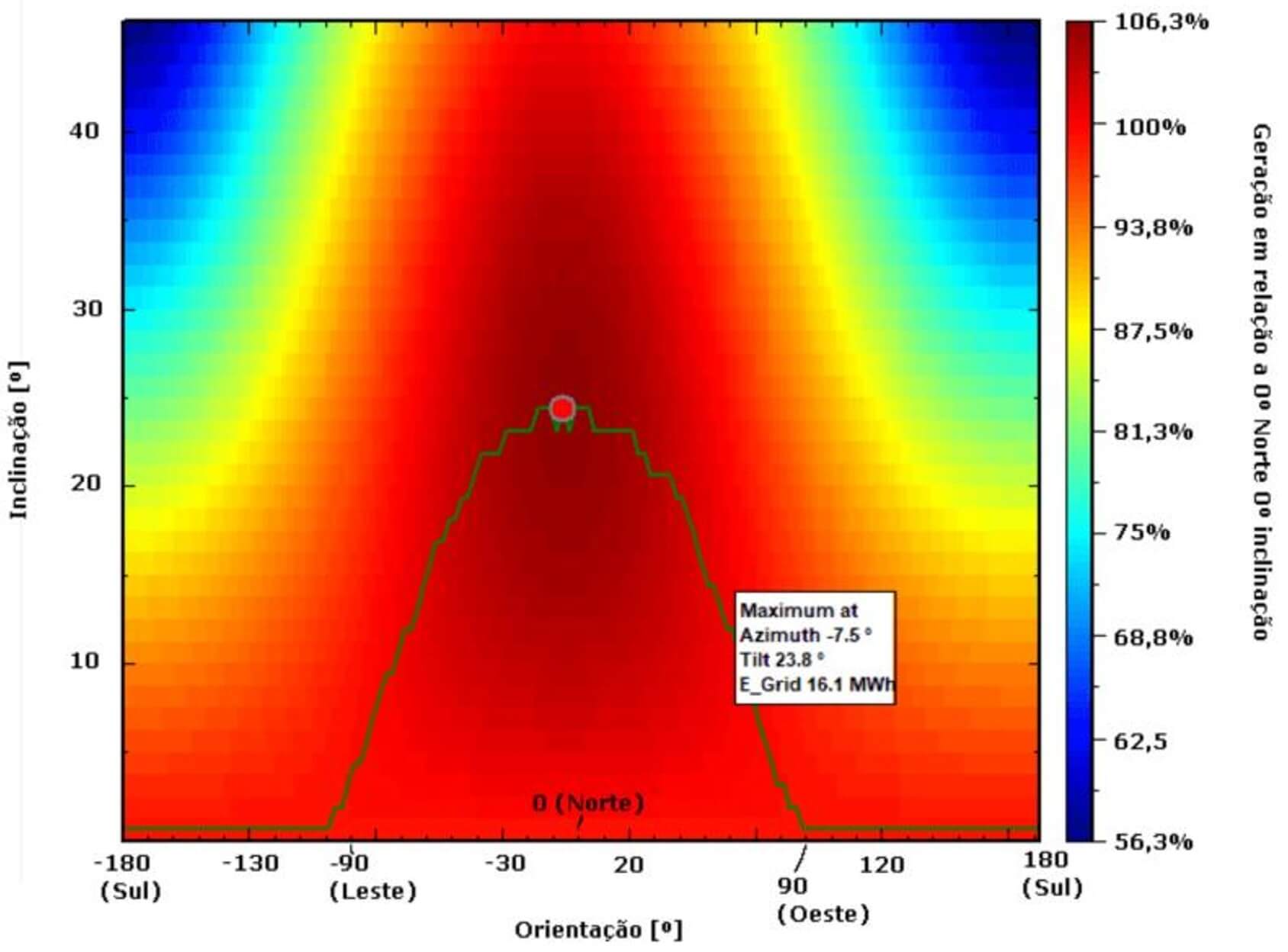What is the correct angle for tilting photovoltaic modules? This is a simple question and at the same time a mystery that permeates the world of solar energy.
If you have a roof, the answer couldn't be more straightforward: the angle of inclination is the same as that of your roof. If you are not satisfied with your roof or are going to do a photovoltaic installation on a slab or on the ground, then you will have to keep looking for the answer. After all, what is the best tilt angle for the photovoltaic module? How to calculate?
First, let's keep one thing in mind: we would like the front surface of the solar panel to always face the sun's rays (i.e., perpendicular to the direction of the rays).
Obviously, this requires a tracking system, as the Sun's position and trajectory in the sky changes throughout the hours, days and months of the year. But in this case we are talking about fixed systems, in which we must choose a fixed inclination angle, which cannot be changed.
Let's use some basic geometry in the figure below. The illustrated situation shows what happens on the summer solstice in the southern hemisphere (12/21). On this day, solar declination is maximum and the Sun describes its highest trajectory in the sky.
At any point at latitude L, the solar module needs to be tilted at an angle of L-23.45°. Following similar reasoning, we can conclude that on the winter solstice (06/21) the module must be tilted at an angle L+23.45°.
The angle 23.45° corresponds to the declination of the Earth's rotation axis (North-South axis) in relation to the axis of translation movement around the Sun. This declination is responsible for the seasons of the year and also has as a consequence the variation of the height of the solar trajectory on different days of the year.
In summary, for a given latitude L the best inclination angle at the summer solstice (when solar height is maximum) would be L-23.45°. At the winter solstice (when the solar height is minimum) the angle should be L+23.45°. To favor energy generation throughout the summer (and not just during the solstice), the recommended inclination angle is L-15°, while in winter it is L+15°.
The number 15°, added or subtracted from the latitude angle L, is recommended by many authors because it is approximately the average value between the minimum and maximum Solar declination angles, between the equinoxes and the solstices. In fixed systems, in order not to favor any day, month or season of the year, the general rule is to tilt the modules with the latitude angle L.
This rule, however, does not replace generation analysis carried out using software such as PVSyst based on historical solarimetric data. There are climatic factors, not just geometric ones, that affect the correct choice of inclination angle in photovoltaic systems.
The following figures show inclination angles suggested by the PVSyst software in the city of Campinas-SP, with a South latitude of approximately 23°. The following situations were considered: constant energy generation throughout the year (slope = 23°), greater generation in summer (slope = 23°-15°) and greater generation in winter (slope = 23°+15°).
The general rule is always to orient the modules to the North (in the Southern Hemisphere) and tilt with the latitude angle, but the general rule does not always apply and graphs like the one shown below can be obtained with an advanced optimization analysis in PVSyst to the location where the solar plant is intended to be installed.
The ideal angles for installing a photovoltaic module may vary depending on the climate and terrain of the location. The following graph, created with PVSyst's advanced optimization tool, relates inclination, azimuth and energy production. The third dimension of the graph is represented by the color map.
The graph shows that the best way to install a photovoltaic module in this location is with an azimuth of 7.5° (East) and inclination of 23.8°. The suggested tilt angle is very close to the latitude angle.
One interesting fact in this graph is that the suggested azimuthal orientation is not zero, that is, the solar panels should not be facing exactly the geographic North in Campinas.
Conclusion
A good rule of thumb to follow is tilt the modules with the same latitude angle as the location to guarantee the better performance of the photovoltaic system, with approximately constant energy production throughout the year, without favoring any particular time of year.
In other words, if your city has a latitude angle of 23°, a good idea is to tilt the photovoltaic module at this same angle in relation to the horizontal plane. Don't worry about precision: a few degrees more or less won't make a difference. It is not always possible to tilt the modules to the exact desired angle, depending on the tilting solution you are going to use.
If you want to produce more energy in summer, a good idea is subtract 15 degrees from your latitude. For example, in Campinas (latitude = 23°) it would be recommended to tilt the modules at 8°. If you want produce more energy in winter, one option would be to add 15 degrees of your latitude (that is, an inclination of 38° in Campinas).
But the rule is not always valid, as the correct tilt angle for solar modules depends on climatic and geographical factors. Furthermore, the rule does not apply to modules that are not oriented towards the geographic North.
The general rule is also not valid for solar plants with modules arranged in very close rows, as in this case the mutual shading factor of the rows must be considered.
The best performance of the solar plant depends not only on the angle of inclination of the modules, but also on the spacing between them. Regardless of any rule followed, the correct installation angle of the photovoltaic modules of a photovoltaic system can only be accurately determined from an advanced simulation in software such as PVSyst.
Want to know more? Don't forget to participate in events in the solar energy sector! They can provide valuable insights and updates on best practices and the latest technologies, helping you make more informed and effective decisions.
If you want to explore further the technical details and performance optimization of photovoltaic systems, consider investing in solar energy courses and training. These programs offer more in-depth knowledge about module tilt, in addition to addressing other issues relevant to efficiency and maximizing solar energy production.



















6 Responses
Congratulations Marcelo, “Excellent explanation. Very rich in details.”
I'm a layman and I was looking for an answer on this matter. I find it strange that the signs on my house were placed with zero inclination…..the dirt from dust and leaves gradually accumulates.
I would like an opinion on this
Professor, Marcelo Villalva, what would be the loss of performance, in relation to the ideal inclination, modules in Juazeiro/Ba, fixed on a Kalhetão roof, almost horizontal, gabled, opposite inclinations of 3% only? East West.
Great material, clear, direct, simple. The type of material that I make a point of copying/pasting, whenever I need it. Thank you very much!
Very good article.
We must emphasize the climate, imagining that in summer there are much more clouds and rain, where we must tend the final choice towards the winter angle.
Finally, these impediments to the sun's rays also occur due to dry fog in pollution in large cities or burning regions, as we see in winter. But these are still less restrictive than summer clouds.
Similarly, there are fogs associated with humidity and temperature, proportional to the local altitude. They occur in greater density at dawn, mainly in winter but also during the rainy season. these can be worse in certain places than summer clouds.
Ultimately, the choice is complex.
Thank you for the tips.
I really liked
Simple and direct language without fluff.